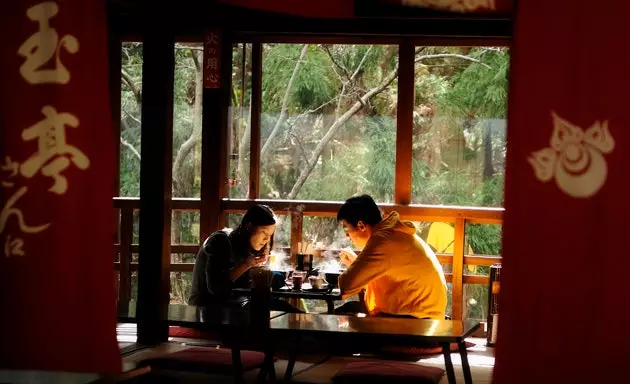
Refueling on one of the trails leading to Kyoto's Fushimi Inari Taisha Shrine
We start from two premises and a certainty. One is not an expert in Japanese gastronomy and when he returns from a long trip he is looking forward to giving a good account of a good mother's stew from Madrid. The certainty: after two weeks in some of the best Japanese restaurants in the world, meeting chefs who grew up with knives like swords, handling voices like torafugu, okonomiyaki or kaiseki, drinking sake before and sobayu in sauce afterwards, the starting premises were ratify, are underlined with indelible fluorescent, but one is in a position to write interesting things about fine dining in Japan.
The route starts at Tokyo, the capital with the most Michelin stars in the world . Before traveling I asked Ricardo Sanz, head chef of the ** Kabuki Wellington , the first Japanese restaurant awarded with a Michelin star in Spain ** (now the Kabuki Restaurant accompanies him in the distinction, which he founded in 2000 and which now directed by his disciple Mario Payán), his favorite places in the Japanese country and he did not hesitate: – Hokkaido, an island at the extreme north latitude of Japan , where it is extremely cold, but which has the best national parks in the country and is perfect for spending an isolated season in the mountains. "Sorry, Ricardo," I replied in a timid tone. I meant restaurants. -Then, without a doubt, chef Seiji Yamamoto's RyuGin, in Tokyo, and chef Tokuoka's Kitcho, in Kyoto.
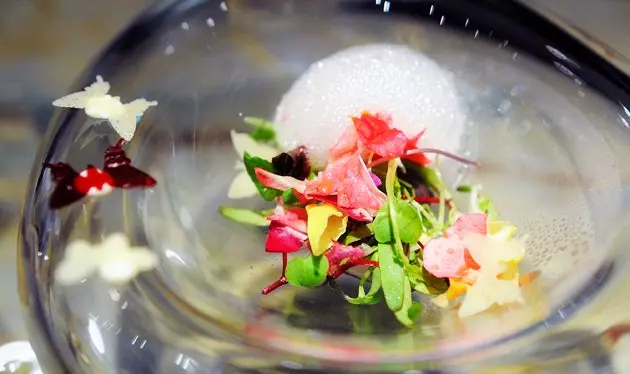
Cod foam, a dish that requires authentic scientific preparation
evolution kitchen
Fifteen hours of flights later and eight hours of jet lag, I am sitting at one of the seven tables in the RyuGin, a small restaurant , without windows, with a predominance of wood and ancient hand-painted ceramics of Imari, Kutani and Kyoyaki workmanship (I would know this later). The Spartan atmosphere contrasts with the district where it is located, Roppongi, the fashionable shopping district , very popular for its nightly party.
Seiji Yamamoto's appearance with his cooking team is like a typhoon . He accompanies each dish with a torrent of words. He sports pop star bangs, a wide-brimmed smile, a Hawaiian shirt, and an infectious foodie enthusiasm. Among the dishes, the one that is crowned with 30 kinds of vegetables and 10 kinds of shellfish, and Genmaicha soba , a green tea mixed with toasted brown rice. A few years ago he became famous for inventing a sauce with which he draws a edible barcode that can be read with a mobile phone latest generation, in which you then receive the complete recipe for that dish.
He defines his work as an evolution of traditional Japanese cuisine: “Each stage is different, it offers new possibilities and you have to pursue them. The cook has to ask himself why a certain dish has one ingredient and not another”. What is the current boom in Japanese cuisine due to?: “The Japanese are very closed. Until recently, there was no interest in sharing our culture. all this has changed . There is an interaction, an interest in knowing and being known. And there are other factors. In Japan, unlike Europe, we have seasonal fish. The raw material – let's not forget the forests – is a blessing . And the treatment in the case of fish, for example, is also very different from when it is caught until it is cooked”.
One warning: the RyuGin, which has had three Michelin stars since January, asks the diner to be careful when applying perfume or cologne before visiting the place, given the sensitivity of the aroma of its dishes. So no essence of violets or the like, please.
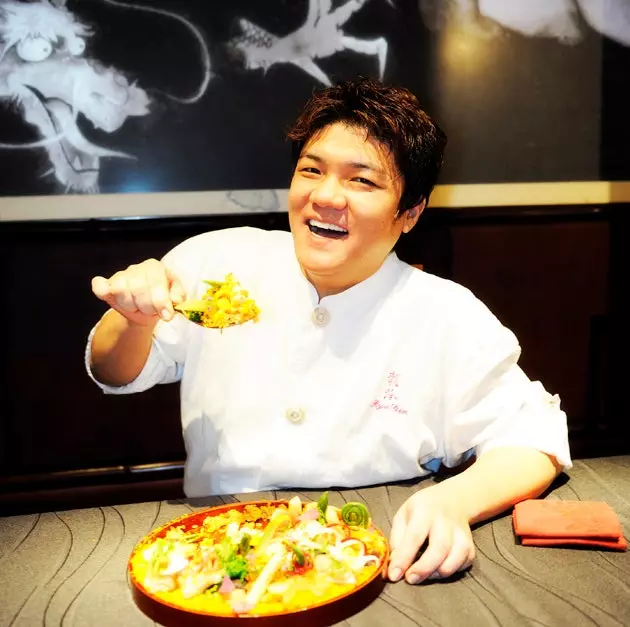
Chef Seiji Yamamoto at the RyuGin in Tokyo
naturalistic kitchen
The next day we went to **Yoshihiro Narisawa's restaurant,** whose establishment is the opposite of Yamamoto's. Everything here is natural light, the furniture is pure avant-garde minimalism, there are no paintings, no ceramics, no colors, no music. The idea is that nothing distracts attention from what is important: the dish. And the idea or theory is what unites both chefs: his cuisine is pure ideology, the incarnation of a cast of concepts worked conscientiously in the kitchen . Although Narisawa prefers to talk about philosophy: “We must continue to harbor the belief that all the elements of nature, even the most insignificant, are part of the spirit of the gods ”.
So when you sit down you find a forest on your plate. But a real forest. The tasting menu is made up of ten dishes that reflect the chef's obsession with both nature conservation and seasonal raw materials . The menu does not detail the dishes to play with the surprise of the diner and it is limited to recommending the client to wait for the next dish, in case the one he has in hand does not convince him. Earth, fire and water. Charcoal, sawdust, moss scent, cedar-infused spring water. "You have to listen to nature." Seasons. I will not be the one to reveal the secret.
** Les Créations de Narisawa ** is ranked number 12 in the other great gastronomic bible, the list that leads the Danish Noma with the 50 best restaurants in the world published every year by San Pellegrino. The treatment is delicate, as always in Japan, but our presence in the restaurant seems timed and they refuse to show us the basement, which hides a fabulous pantry and aquarium as revealed by the mysterious sparkle in the eyes of Yoshihiro Narisawa, Nature's chef. We went out. Molecular engineering awaits us.
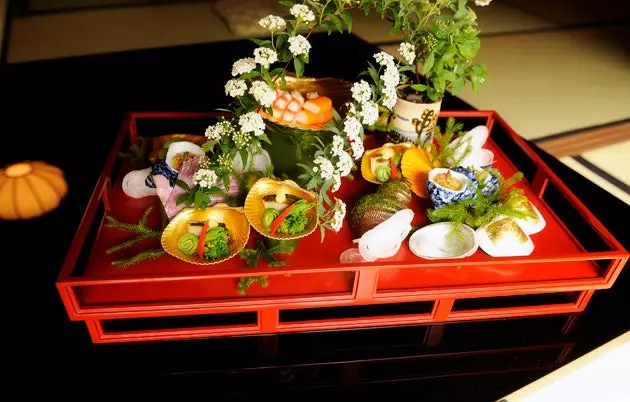
Hassun, or chef Kunio Tokuoka at his best
Molecular kitchen
The restaurant specializing in sushi is called sushi-ya. If the establishment exhibits a large bar with seats lined up in front of the counter, with the sushi chef working behind it, we are in a sushi bar. A Western cliché says that the Japanese eat almost daily in a sushi bar, when the truth is otherwise. It is not a rarity but it is not your second home either.
** Sushi: The Japanese Tradition ** is a video that has been around the internet since 2005, very popular in Japan and the US, which satirises this point. It also pokes fun at the Japanese obsession with social etiquette. Things like that between two work colleagues the one with the lowest social rank should serve the drink while using the expression –without any sense– maa maa maa, while the server responds oh toh toh toh. He then mentions that you should never ask a chef about his past. When the cook polishes the edge of his knife and stares at the camera, a voiceover emphasizes: “Every Japanese chef hides a dark past”.
As soon as I arrived at the ** Tapas Molecular Bar ** of the Mandarin Oriental hotel, I asked the chef Koichi Hashimoto for his past. He separated us the bar. And his links with the lights of Spanish gastronomy are very close . “I grew up as a chef on Okinawa's Ishigaki Island, but what marked me were the two years in Spain working together with Ferran Adrià and Martín Berasategui.
Back in Japan I was at Sant Pau in Tokyo, Carme Ruscalleda's restaurant in Japan, and since 2007 at Tapas Molecular Bar”. 'Bar' because it has a bar reminiscent of a sushi bar, albeit with the luxurious atmosphere of a hotel like the Mandarin, on the 38th floor, with breathtaking views of the Shinjuku and Ueno districts. 'Molecular' for the scientific preparation of recipes, such as cod foam (“If it is not true that we eat sushi every day, even less so that we indulge in molecular cuisine, quite a rarity even in a gourmet city like Tokyo ”, Hashimoto points out between plate and plate). Y 'caps' : I am not going to explain this to a Spanish reader.
Before I left I asked him, now with confidence, why he signed as 'culinary engineer' instead of calling himself a cook or a chef. "It's more cool, don't you think?" Hashimoto can be trusted, even when you have a test tube or a sharp knife in your hands.
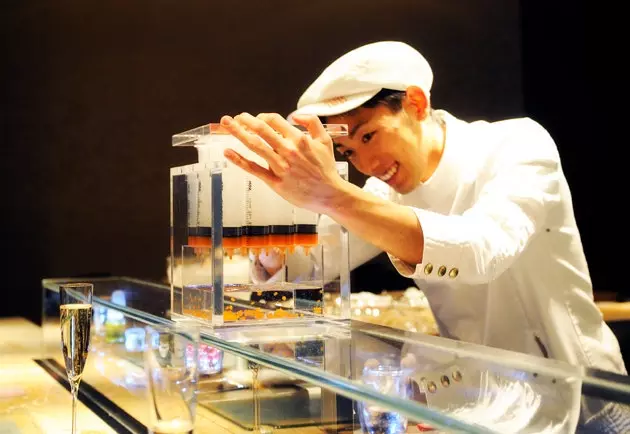
Molecular Cuisine Experiment at Tokyo's Mandarin Oriental Hotel
license to cook
More dangerous is the puffer fish . Legend has it that the poison of a single fugu can kill 30 people. Tetrodotoxin is found in the liver and gonads of fish and is not recommended to be ingested, even a little, as it it is a thousand times more powerful than cyanide . A company is dedicated exclusively to the recycling of this poison in Japan. Cases of puffer fish deaths that still respond to direct manipulation on the high seas by fishermen who cut it on their own without sufficient skill . Kind of like eating a live cobra.
A restaurant must be licensed to sell it and a chef to cook it. To get it, you need three years of training and pass a theoretical and a practical exam, which consists of cutting and serving a fugu in less than 20 minutes. There is an opposition every year for a thousand new applicants to obtain their license , but just over 60 percent tend to be more crafty than a fisherman on the high seas.
A recommended place to eat fried puffer fish (fugu kara-age, €20) or a tapa of torafugu sashimi (tiger puffer fish, the most appreciated species, €22), a rare delicacy in Japanese restaurants, is the Tentake , very close to the Tsukiji fish market. The palms of the most famous sumo wrestlers in the country are immortalized on its walls. , a type of clientele with which it is not recommended to play.
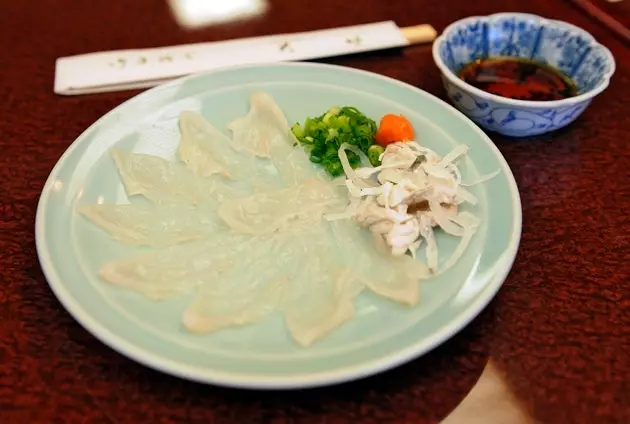
Plate of puffer fish shashimi, do you dare?
New Imperial Kitchen
**When you take off your shoes and enter the Kitcho Arashiyama** you have the feeling that the last 400 years have vanished and you are in the imperial Japan of the Edo period , when the country was isolated from the outside world. Surely that Japan has little to do with the one you are seeing (there is an electric light in the house, the mobile in which you keep Yamamoto's recipe rings), but you imagine it that way. They impose the rooms divided into watertight compartments so that customers do not see each other, the refined garden so changing according to the season of the year , the cold tatami, the centuries-old crockery.
You are in Kyoto, two and a half hours by shinkansen from Tokyo, in the imperial capital between the years 794 and 1868, the city of Zen gardens and more than 1,600 Buddhist temples and 400 Shinto shrines. Kunio Tokuoka is precisely the greatest exponent of imperial cuisine (kaiseki), so ceremonious and ritual although he prefers to speak of non-style cuisine, in harmony with innovation and defined by the ingredients offered by each season and the particular taste of the client , that he is the one who must decide what he wants to eat. Keep in mind that the minimum budget to eat here is 36,750 JPY, about €360.
Kitcho Arashiyama is a three Michelin star ryotei, an upscale and expensive traditional restaurant. Ferrán Adrià has been a diner on more than one occasion and considers it one of the best restaurants in the world . "But I only drink with him, I never eat," says chef Tokuoka with a laugh. Today he presents us with the hassun, a lacquered tray on which he composes a landscape of shellfish, fish, Kobe beef, vegetables and wildflowers.
In Kyoto it is highly recommended to sleep in a ryokan, traditional japanese lodging . And already put, his thing is to do it in the ** Hiiragiya , perhaps the most famous in Japan ** n. Its kaiseki cuisine restaurant is up there with the best in Kyoto and the rooms, dating back to 1818, They have wooden toilets, paper doors, a tatami mat floor and a tokonoma, a niche of samurai origin –it was the place consecrated to the sword– that today belongs to the decorative liturgy. The writers Kawabata and Tanizaki considered this ryokan their second home. In fact, much of this report was written in the Hiiragiya (I don't know if what I just said is good or bad for the Hiiragiya).
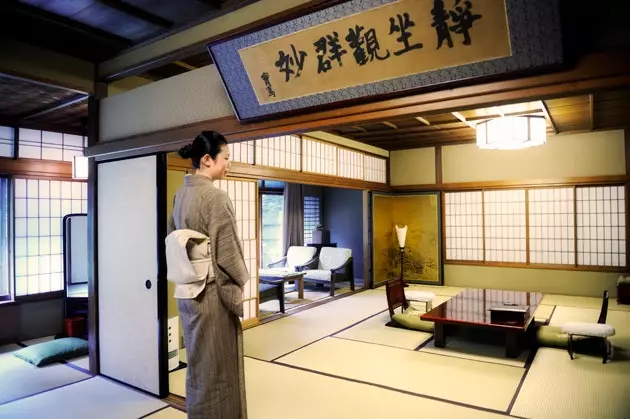
One of the rooms in the old house of Hiiragiya Ryokan
Okonomiyaki-ya
We left the Mandarin Oriental in Tokyo with a curious recommendation. Molecular cuisine is pure avant-garde and kaiseki is the healthiest , but a trip to Japan is well worth an original farewell with a caloric and excessive feast of okonomiyaki. And where they do it best is in Hiroshima , an hour and a half by shinkansen from Kyoto. The city is inextricably linked to the morning of August 6, 1945, when the Enola Gay dropped an atomic bomb on a town for the first time in history.
Although there is no shortage of commemorative milestones, do not look for ground zero. The bomb was detonated in the air, about 600 m high, and released a radioactive fungus that killed 140,000 people. The ruins of the old Pavilion for the Promotion of Industry are the most devastating memory of the atomic attack. Very close to here is the island of Miyajima, with the symbolic O-torii gate in front of Itsukushima Shrine . A friendlier place and that the Japanese estimate as one of the three most beautiful landscapes in the country (along with Matsushima and Amanohashidate).
But back to the table, what are okonomiyaki? It's about some crepes (for the report to be truly gastronomic, I needed to sneak in at least one Gallicism) of flour cooked with onion, dried prawns and spices . Before World War II they were known as issen yoshoku (which could be translated as 'western food for pennies' ), but as they became more popular, the recipe became tastier. Among the ingredients you can choose from are egg, cheese, pork, rice, cabbage, noodles, udon or soba, octopus and seafood..
Hiroshima boasts about its oysters, so that variable is highly recommended. In the hassho restaurant , in Yagembori, they prepare okonomiyaki wonderfully. You sit at the bar and the cook sends them to you right there. You can eat them directly on the grill or on a plate, brandishing a spatula or traditional wooden chopsticks, with sake or beer . Good conversation will not be lacking, even if it is in Japanese and you do not speak it. The best climax to a trip to one of the best cuisines in the world. This article has been published in issue 48 of Traveler magazine
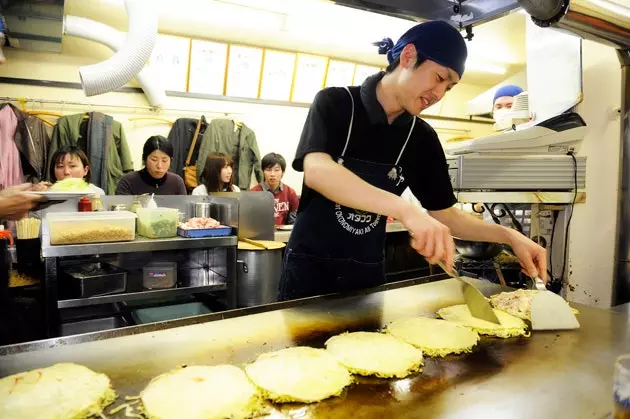
Okonomiyaki Restaurant, Hassho
